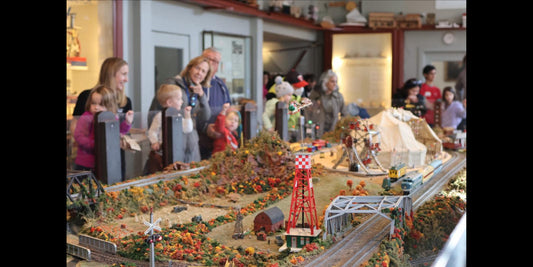An end-to-end walk in Bishop Woods takes you from New Haven to East Haven. First you head east through a gate past the Bishop Woods School parking lot, then, midway, you take a 90-degree turn to the north. It’s fairly easy to stay on course. The woods are encircled by houses and condos, and the approach to the elbow turn is conveniently flagged by the corridor of a buried gas line.
Vertically, the course is much trickier. From the gate, you immediately start climbing a steep ridge, the highest point of which is also the highest point in New Haven east of the Quinnipiac River. If you climb all 230 feet, slipping on a cushion of leaves, ducking under fallen trees, you can see a stretch of the river and the downtown New Haven skyline beyond. On the other side of the ridge, you go down, then down again, until you find you have to look up to see out. From start to finish, you’re under a tall canopy. But it’s the bowl-like distance to the edges from the middle that gives the otherwise modest 42 acres of woods a sense of scale. A languid stream—wide, narrow, wide again—runs along the bottom.
Bishop Woods is officially a bird sanctuary, donated to the city as such by Dr. Louis Bennett Bishop, a retired pediatrician and avid ornithologist, in 1927. So before it was Bishop Woods, it was Bishop’s woods, familial land that, given his lifelong passion for studying birds, would have been just the doctor’s place to look for them. According to a biographical sketch in The Auk, a professional birding journal to which Bishop often contributed, “he and L. C. Sanford”—another budding ornithologist and future New Haven physician—“often walked together in the countryside about New Haven observing birds and shooting them with their slingshots.” If that last part disturbs, rocks and birdshot were apparently how ornithologists stopped a bird for close inspection in the absence of the kinds of cameras and binoculars—not to mention humane trap and release methods—available in the field today.
At 14, Dr. Bishop graduated to a rifle, and was noted late in life for having collected 53,000 “skins”—the feather coat separated from the expired bird for eternal preservation and study. (The Yale Peabody Museum still has a share of this collection.) It was also how he earned his other great reputation among ornithologists. “Dr. Bishop was especially interested in plumage changes and in the slight differences which might, or might not, indicate racial distinction,” writes the Auk essayist. “He collected with these thoughts in mind, collecting from one locality at various times of the year or choosing particular areas which might yield information concerning marginal forms.” He had over time used his collection to argue for the existence of new subspecies of finch, blackbird, hawk and other North American birds.
Having his own stretch of woods to look for birds in day after day would have offered a more scientifically controlled way to study a bird population for plumage changes within it—even if he was reducing that population in the process. Ownership would have enabled him to keep every tree upright, guaranteeing that birds would keep coming back to nest in them. In that narrow sense—a property left undeveloped—Dr. Bishop would have properly regarded his woods as a sanctuary. But that designation as a qualifier for its donation has had its drawbacks.
As a “sanctuary,” it was never a park exactly. With no park infrastructure to develop or maintain, it remained a patch of woods. Residential streets eventually hemmed it in and obscured it, so that today you can circumnavigate it in glimpses, driving up side roads, turning your car around cul-de-sacs. In this century, Bishop Woods made the news—first in the New Haven Register and later WTNH News 8—as a battleground between concerned residents who enjoy it on foot and unconcerned residents who enjoy it on all-terrain vehicles.

Park rangers have been purposeful about getting the ATVs out, notwithstanding a handful that are abandoned and rusting there. “It is a wonderful area that we have not fully mapped,” explained Martin Torresquintero, who was then the outdoor adventure coordinator at the Department of Parks & Trees. “At one point, we blazed the trees where we were going to put trail markers, but someone removed them. You will also see some arrows on trees, but these were done by locals marking the areas where they go with ATVs. Both New Haven and East Haven PD have been active, trying to curb ATV use, but it’s hard to keep up.” Understandably, the small Parks & Trees field staff prioritizes New Haven’s more widely used flagship parks. The cross-border situation of Bishop Woods also suggests how coordination between municipalities—not to mention the gas company—might create administrative hurdles, turning a shared space into one that’s ripe for misuse.
Fat-tired clown cars spinning in circles presumably scares birds away, but the more fundamental threat is to the bushes and small trees that are sources of food and shelter. Managed bird sanctuaries, like those run by the Connecticut Audubon Society around the state, are largely devoted to cultivating what ecologists call the understory. “Something we do here is fencing,” said Ryan McLean, now the senior education coordinator at the chapter in Greenwich, “to keep deer and other large animals out that would otherwise eat a lot of plants,” adding that “another major threat to a lot of bird habitats… is the onslaught of invasive plants—ornamental plants that people bring into our area for their own garden.”
Managed sanctuaries entail human intercession to counteract and prevent human intervention. Even blazed trails are a counterintuitive way to keep a sanctuary a sanctuary. They invite human traffic, which presents a danger to the habitat, but they also corral it, which limits the danger. “You never know what you’re stepping on even if it looks like you’re just stepping off to the side of the trail,” MacLean said. But an unmanaged sanctuary at least has the benefit of not being anything else. By day, it’s a small green island in a sea of concrete—what MacLean called an international hotel for migrating birds. By night, it’s completely dark, shedding no distracting light for birds navigating by the stars.
And Bishop Woods is in some ways an ideal place for a sanctuary. Its marshy low point, good for bathing and drinking, is an attractor for birds, and so is its high point. “Songbirds that have been migrating all night, the sun is starting to come up, they see a high canopy point, that’s an easy place to drop down to,” MacLean noted. And Bishop Woods is dominated by oak trees, which are host to over 2,000 species of insects. On my walk, I saw trunks dotted and bored by generations of pointed bills. I saw a red-bellied woodpecker hop step to the top of one oak then move on to the next. I heard at various points the songs of a red-breasted nuthatch and a bird I couldn’t identify, as well as the windup tin toy calls of a titmouse and several chickadees.

Later, back in the school parking lot, I saw a band of spotted birds evidently requiring no sanctuary, fretting over a discarded bag of chips. European starlings. An import whose arrival in New Haven, according an early 20th-century list published by the New Haven Bird Club, was first recorded in 1900 by Dr. Bishop.
Bishop Woods Bird Sanctuary
Location
Written by David Zukowski. Image 1 photographed by Dan Mims. Images 2 and 3 photographed by David Zukowski. This updated story was originally published on February 25, 2021.







